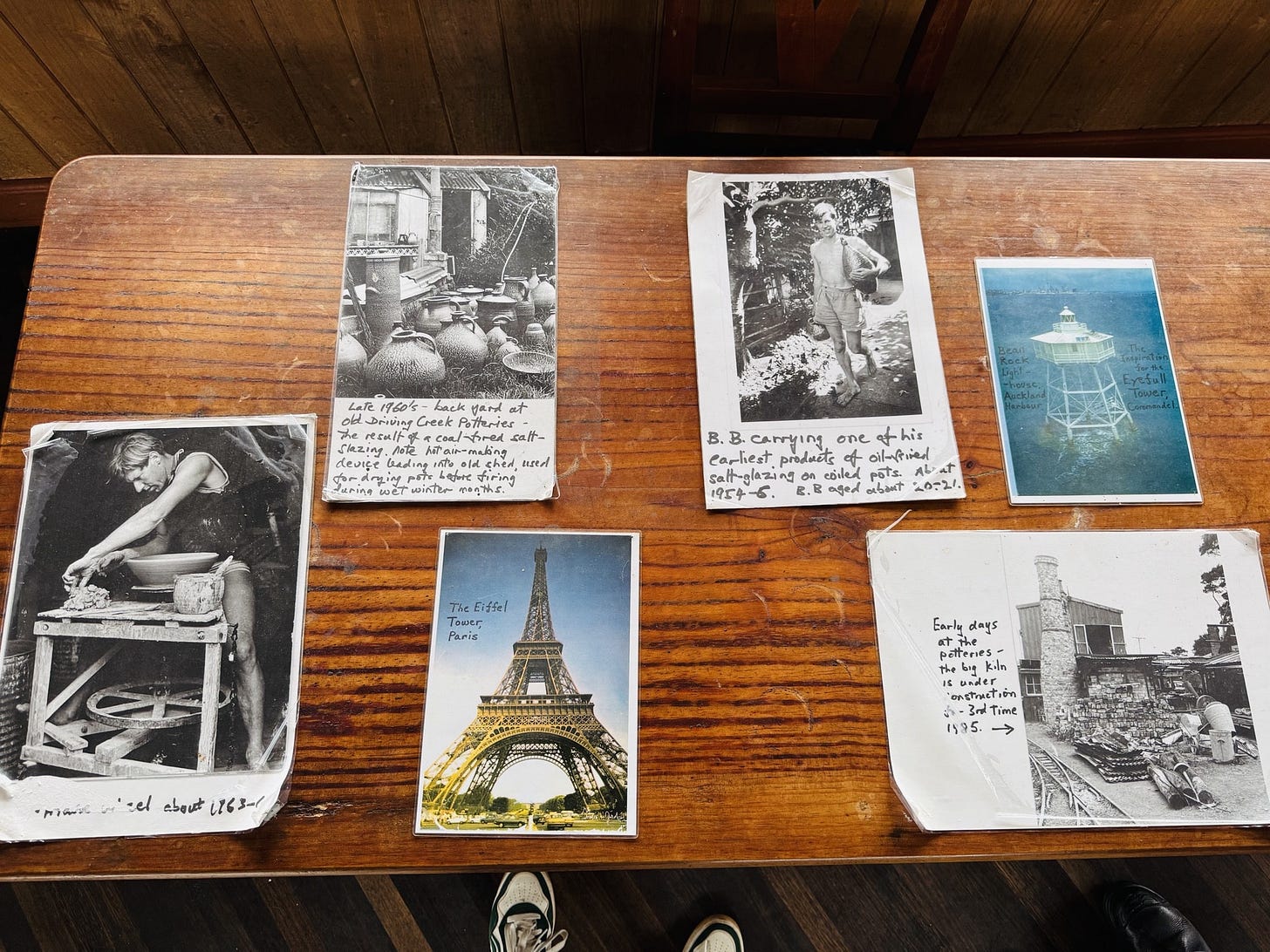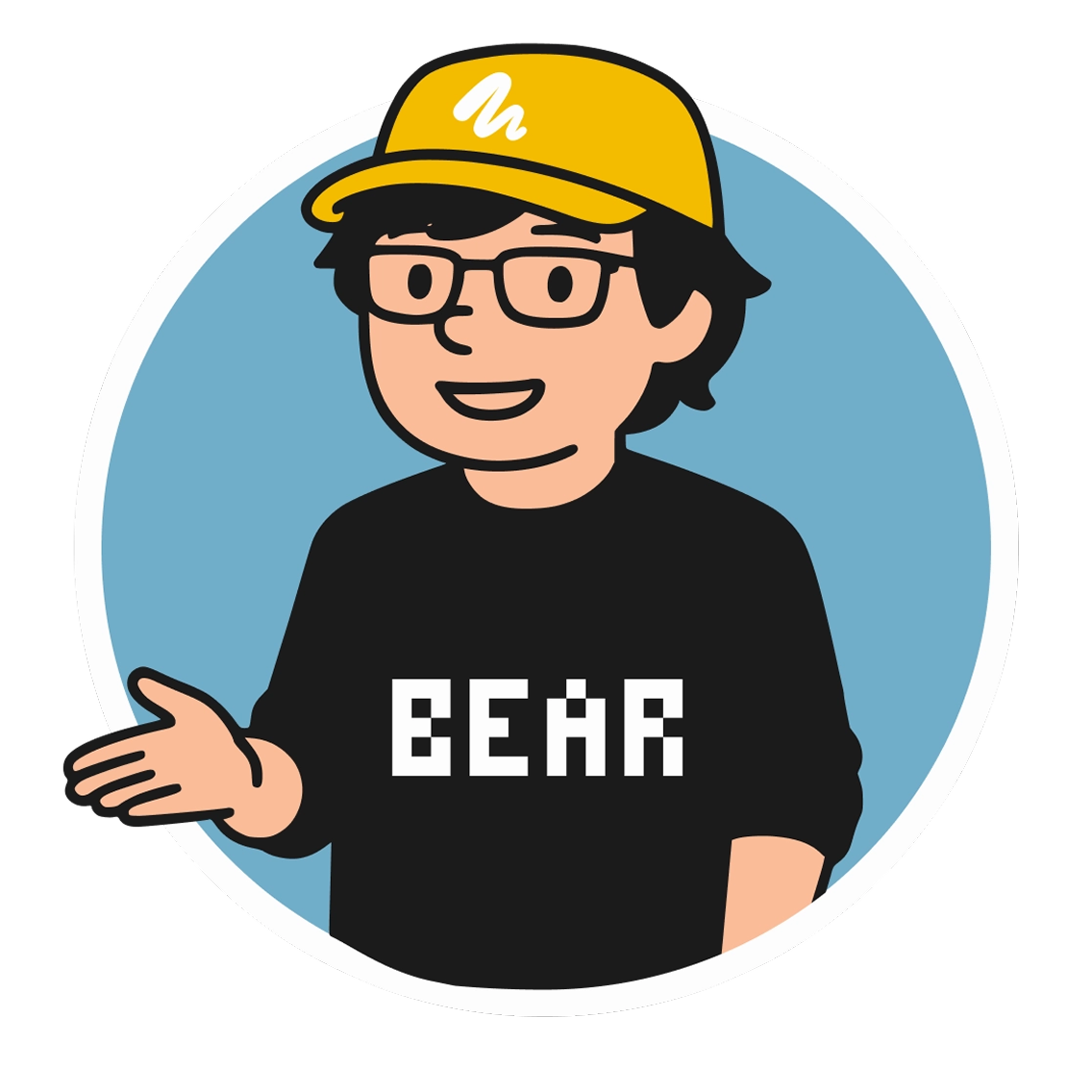#58 / Side-Projects with Steam Power: Finding Your Own Driving Creek Moment
Barry Brickell’s Maker Playbook for Modern Builders
Barry Brickell’s hillside railway wasn’t on the itinerary when my family dashed through a wet Coromandel weekend—but one faded portrait in the station café rewired the whole trip. A former science teacher who lasted a single term before quitting to dig clay, Barry spent the next four decades hand-building kilns, replanting native forest and laying three kilometres of 15-inch track that still hauls 30 000 visitors a year up to the “EyeFull Tower.” , , ) His maker-mindset packs lessons every product person can steal.
1 · The Snapshot That Stopped Me
Black-and-white photo: thick brows, clay-stained shirt, grin like he’d just hacked a prototype. Born in New Plymouth in 1935, raised in Devonport, Barry Brickell ditched city life for bush as soon as he could.
The little mountain train we were about to board began life as nothing more than a private supply line to drag clay and pine fuel downhill to his kilns in 1975.
Quick bridge → If a pottery sideline can morph into a national icon, what could our neglected side projects become?
2 · Three Maker Principles I’m Pocketing
Burn the Safety Net
Barry resigned from Coromandel District High School six months in, trading a reliable salary for mud-splattered freedom. I’ve just stepped away from a tech-company pay-cheque; good to know bold quits have precedent.
Let Side Projects Take the Wheel
That first 600 m of track, laid only for freight, soon lured curious tourists. Today their fares bankroll everything else on the property. Reminder: today’s “internal tool” can outgrow the core product if you stay open to serendipity.
Build Stewardship In from Day One
Ticket revenue funds predator traps, kauri re-planting, and even releases of the critically endangered Coromandel striped gecko inside Barry’s 22-hectare sanctuary.Features that also heal an ecosystem—or a user community—compound in value.
Quick bridge → Those principles map neatly onto the digital world we design every day.
3 · From Clay to Code: Four Parallels for Product People
Barry’s hillside lab isn’t just a feel-good story—it’s a working blueprint for how we can build digital products. Here are the four echoes I hear loudest:
Side-Project Alchemy
Barry: A short stretch of track meant only to haul clay became a national railway attraction.
Us: That scrappy internal script or hack-day prototype could turn into the next breakout SaaS if we stay curious.
Full-Stack Craft
Barry: He dug his own clay, built the kilns, welded the locomotives—one maker, full pipeline.
Us: Research, prototype, ship, and market in one tight loop; small teams can own the whole stack.
Community Magnetism
Barry: Volunteers showed up to plant 20 000 native trees beside his tracks.
Us: Mission-driven open-source projects draw contributors who give their talent for free because the story resonates.
Ecology of Design
Barry: Bridges double as art pieces; a once-logged hillside is now a wildlife reserve.
Us: Build features that delight users and create positive ethical or environmental impact—baked in from day one.
4 · Why This Hits Home
Different century, same leap: Barry swapped the classroom for clay; I’ve swapped corporate comfort for uncertain, passion-driven work in product education and AI. He also echoes Luo Xu, a Yunnan sculptor who builds castle-like studios on his own land—proof that the impulse to iterate, invite collaborators and leave a useful trace transcends mediums.
Quick bridge → So how do we translate inspiration into Monday-morning action?
5 · Pocket Checklist for Your Next Build
Start with the material at hand—clay, code, words—and prototype fast.
Treat “bypass products” with respect; they might become the headline act.
Embed stewardship; sustainability and community trust are features, not add-ons.
Narrate as you build; story turns effort into magnetism.
Final Stop
If you reach the Coromandel Peninsula, ride the bright-orange train. Notice the hand-hewn sleepers, pottery tiles embedded in the tunnel walls, and the regenerating forest. Then ask yourself: what is my Driving Creek Railway—waiting to be laid, one narrow-gauge length at a time?
Video: Why Junior UX Designers Can’t Get Hired - And What To Do
Why UX jobs are drying up – and how junior designers can still stand out in 2025.
Hello, I’m Bear—a product designer, UX mentor and an award‑winning bilingual podcast host, currently living in Auckland, New Zealand. I enjoy sharing insights from my work, life, and study, helping all of us grow together.
Bear Academy Newsletter is my weekly email packed with thoughts on technology, design, and productivity—featuring book breakdowns, learning tips, and career reflections.
Find me here:







